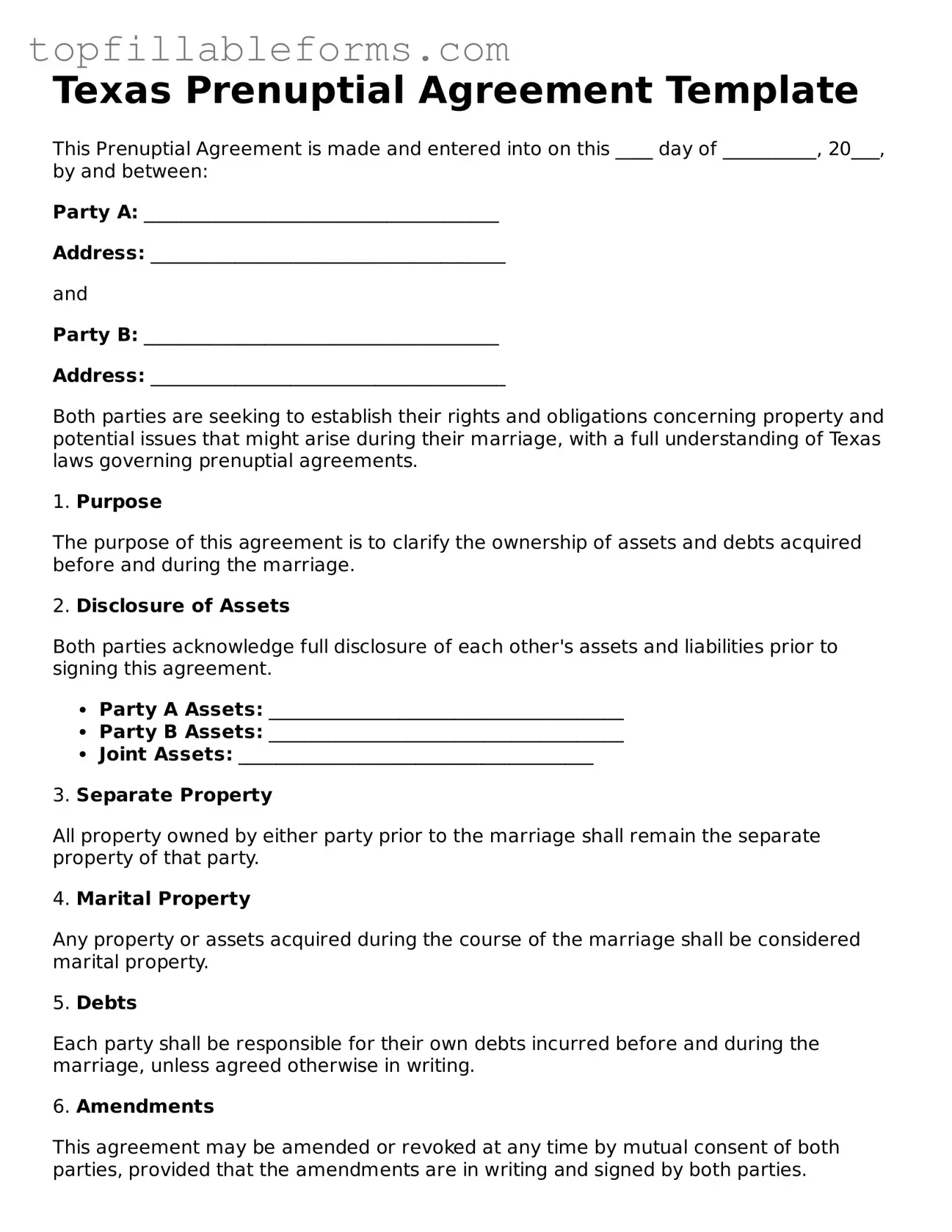Texas Prenuptial Agreement Template
This Prenuptial Agreement is made and entered into on this ____ day of __________, 20___, by and between:
Party A: ______________________________________
Address: ______________________________________
and
Party B: ______________________________________
Address: ______________________________________
Both parties are seeking to establish their rights and obligations concerning property and potential issues that might arise during their marriage, with a full understanding of Texas laws governing prenuptial agreements.
1. Purpose
The purpose of this agreement is to clarify the ownership of assets and debts acquired before and during the marriage.
2. Disclosure of Assets
Both parties acknowledge full disclosure of each other's assets and liabilities prior to signing this agreement.
- Party A Assets: ______________________________________
- Party B Assets: ______________________________________
- Joint Assets: ______________________________________
3. Separate Property
All property owned by either party prior to the marriage shall remain the separate property of that party.
4. Marital Property
Any property or assets acquired during the course of the marriage shall be considered marital property.
5. Debts
Each party shall be responsible for their own debts incurred before and during the marriage, unless agreed otherwise in writing.
6. Amendments
This agreement may be amended or revoked at any time by mutual consent of both parties, provided that the amendments are in writing and signed by both parties.
7. Governing Law
This agreement shall be governed by and construed in accordance with the laws of the State of Texas.
8. Signature
By signing below, both parties affirm that they understand and agree to the terms outlined in this Prenuptial Agreement.
Party A Signature: ___________________________ Date: ______________
Party B Signature: ___________________________ Date: ______________
Witness Signature: ___________________________ Date: ______________
